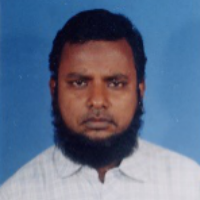
Md. Monirul Islam
Work place: Dept. of Computer Science and Engineering, Bangladesh University of Engineering and Technology, Bangladesh
E-mail: mdmonirulislam@cse.buet.ac.bd
Website:
Research Interests: Engineering
Biography
Md. Monirul Islam received his B.E. degree from the Khulna University of Engineering and Technology (KUET), Khulna, Bangladesh, in 1989, his M.E. degree from the Bangladesh University of Engineering and Technology (BUET), Dhaka, Bangladesh, in 1996, and his Ph.D. degree from the University of Fukui, Fukui, Japan, in 2002.
From 1989 to 2002, he was a lecturer and an assistant Professor with the KUET. Since 2003, he has been with the BUET, where he is currently a professor with the Department of Computer Science and Engineering. He was a visiting associate professor with the University of Fukui. His current research interests include evolutionary robotics, evolutionary computation, neural networks, machine learning, pattern recognition, and data mining. He has over 100 refereed publications in international journals and conferences.
Author Articles
Simplified Real-, Complex-, and Quaternion-Valued Neuro-Fuzzy Learning Algorithms
By Ryusuke Hata M. A. H. Akhand Md. Monirul Islam Kazuyuki Murase
DOI: https://doi.org/10.5815/ijisa.2018.05.01, Pub. Date: 8 May 2018
The conventional real-valued neuro-fuzzy method (RNF) is based on classic fuzzy systems with antecedent membership functions and consequent singletons. Rules in RNF are made by all the combinations of membership functions; thus, the number of rules as well as total parameters increase rapidly with the number of inputs. Although network parameters are relatively less in the recently developed complex-valued neuro-fuzzy (CVNF) and quaternion neuro-fuzzy (QNF), parameters increase with number of inputs. This study investigates simplified fuzzy rules that constrain rapid increment of rules with inputs; and proposed simplified RNF (SRNF), simplified CVNF (SCVNF) and simplified QNF (SQNF) employing the proposed simplified fuzzy rules in conventional methods. The proposed simplified neuro-fuzzy learning methods differ from the conventional methods in their fuzzy rule structures. The methods tune fuzzy rules based on the gradient descent method. The number of rules in these methods are equal to the number of divisions of input space; and hence they require significantly less number of parameters to be tuned. The proposed methods are tested on function approximations and classification problems. They exhibit much less execution time than the conventional counterparts with equivalent accuracy. Due to less number of parameters, the proposed methods can be utilized for the problems (e.g., real-time control of large systems) where the conventional methods are difficult to apply due to time constrain.
[...] Read more.A State-of-the-art Review on Wavelet Based Image Resolution Enhancement Techniques: Performance Evaluation Criteria and Issues
By Samiul Azam Fatema Tuz Zohra Md. Monirul Islam
DOI: https://doi.org/10.5815/ijigsp.2014.09.05, Pub. Date: 8 Aug. 2014
Image resolution enhancement in wavelet domain has been one of the most active research areas in image processing. Many methods and techniques, based on wavelet transformation have been proposed in last couple of years. In this paper, we present a review on the state-of-the-art techniques for wavelet based image resolution enhancement. We summarize them with enhancement ability in peak signal to noise ratio (PSNR) and give comments on their performance. In addition, through our review, we have found some essential criteria and issues related to performance assessment of different resolution enhancement techniques. Our experimental results have proved the significance of these issues. Future directions for image resolution enhancement research are stated at the end.
[...] Read more.Remote Sensing Image Resolution Enlargement Algorithm Based on Wavelet Transformation
By Samiul Azam Fatema Tuz Zohra Md. Monirul Islam
DOI: https://doi.org/10.5815/ijigsp.2014.06.03, Pub. Date: 8 May 2014
In this paper, we present a new image resolution enhancement algorithm based on cycle spinning and stationary wavelet subband padding. The proposed technique or algorithm uses stationary wavelet transformation (SWT) to decompose the low resolution (LR) image into frequency subbands. All these frequency subbands are interpolated using either bicubic or lanczos interpolation, and these interpolated subbands are put into inverse SWT process for generating intermediate high resolution (HR) image. Finally, cycle spinning (CS) is applied on this intermediate high resolution image for reducing blocking artifacts, followed by, traditional Laplacian sharpening filter is used to make the generated high resolution image sharper. This new technique has been tested on several satellite images. Experimental result shows that the proposed technique outperforms the conventional and the state-of-the-art techniques in terms of peak signal to noise ratio, root mean square error, entropy, as well as, visual perspective.
[...] Read more.Other Articles
Subscribe to receive issue release notifications and newsletters from MECS Press journals